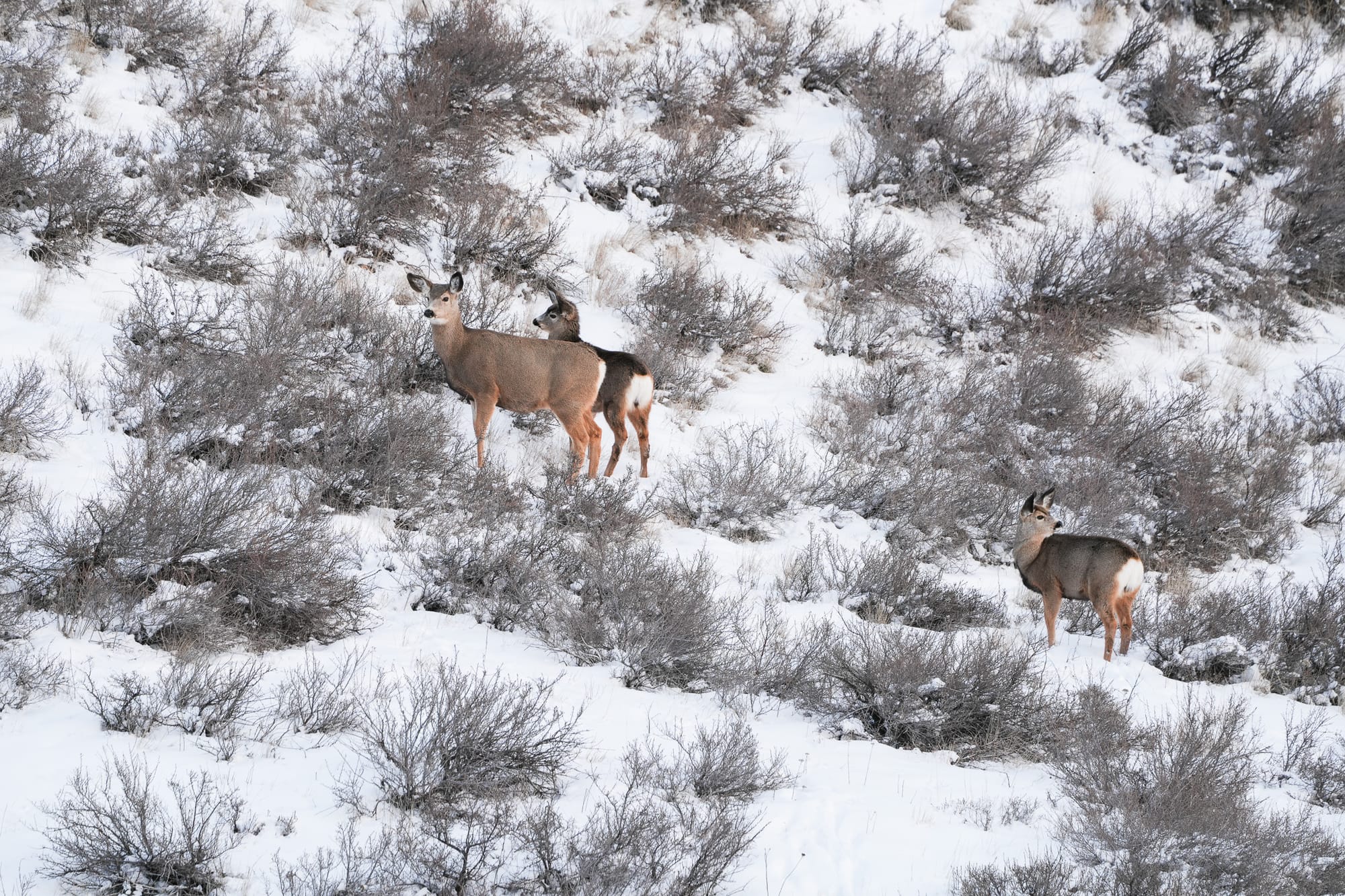January 14-20, 2024
Bits of Snow

A spell of bitter cold has finally subsided into a week of very welcome, but light snowstorms.

Week in Review
Last week's below-zero temperatures put us into a deep freeze, with large areas of local rivers icing over.
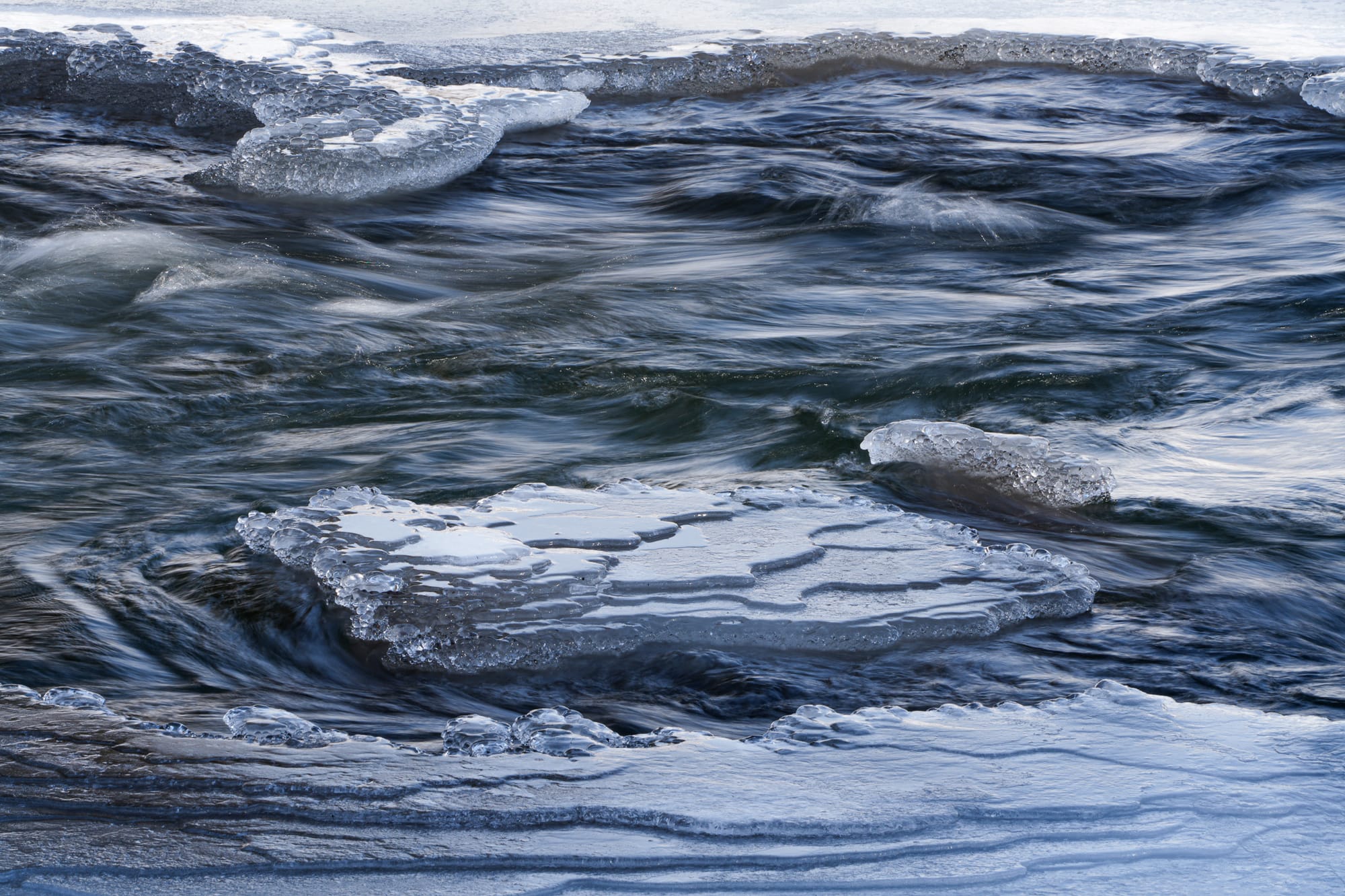
It was beautiful to see different kinds of ice formations on the rivers—and equally surprising how quickly much of this ice melted as temperatures climbed back into the low 20s!
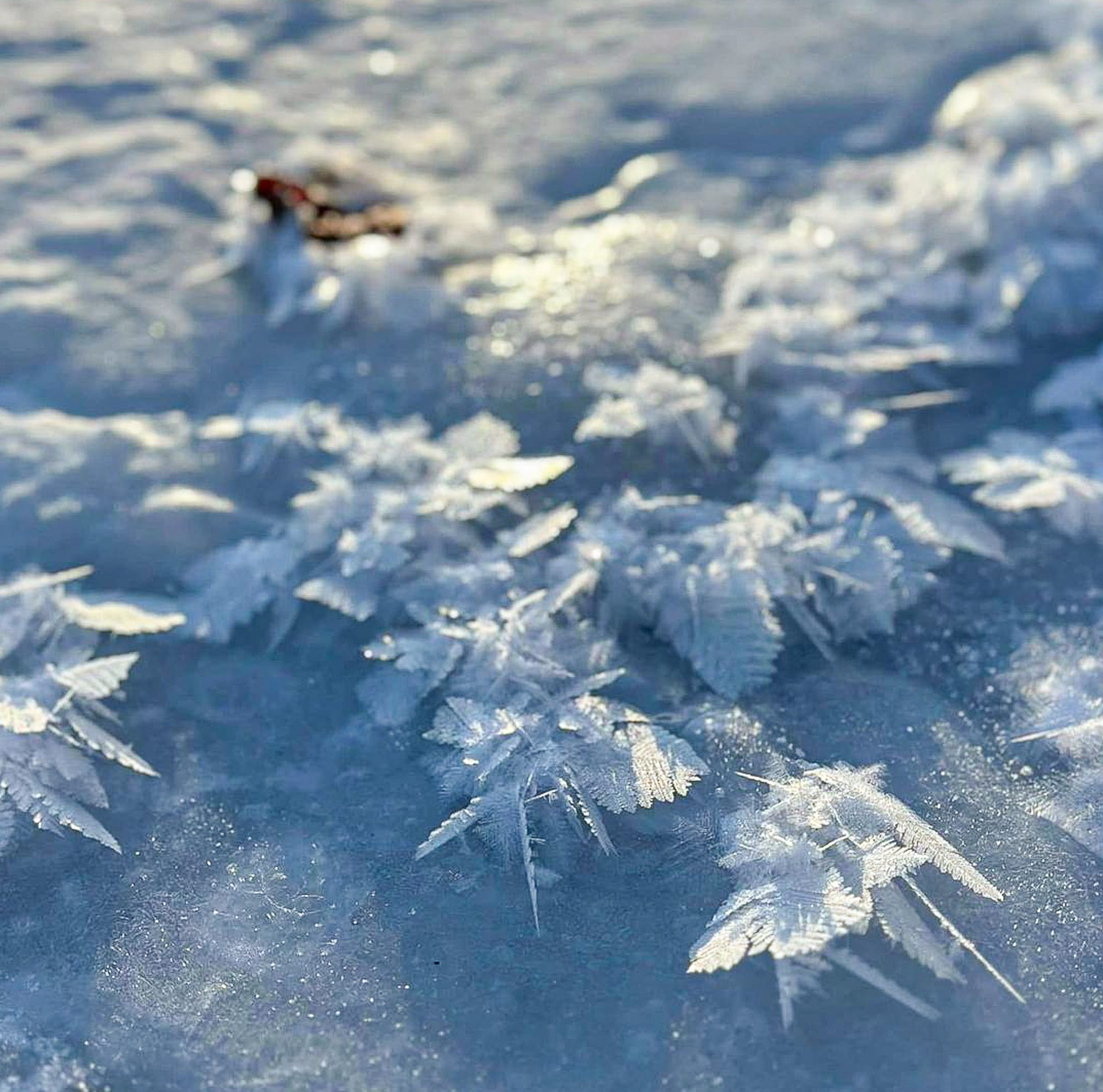
I shudder to think how hard last week's bitter temperatures must have been on the wildlife. In general, animals are adapted to survive these temperatures, but any animal that isn't feeling well isn't likely to survive.
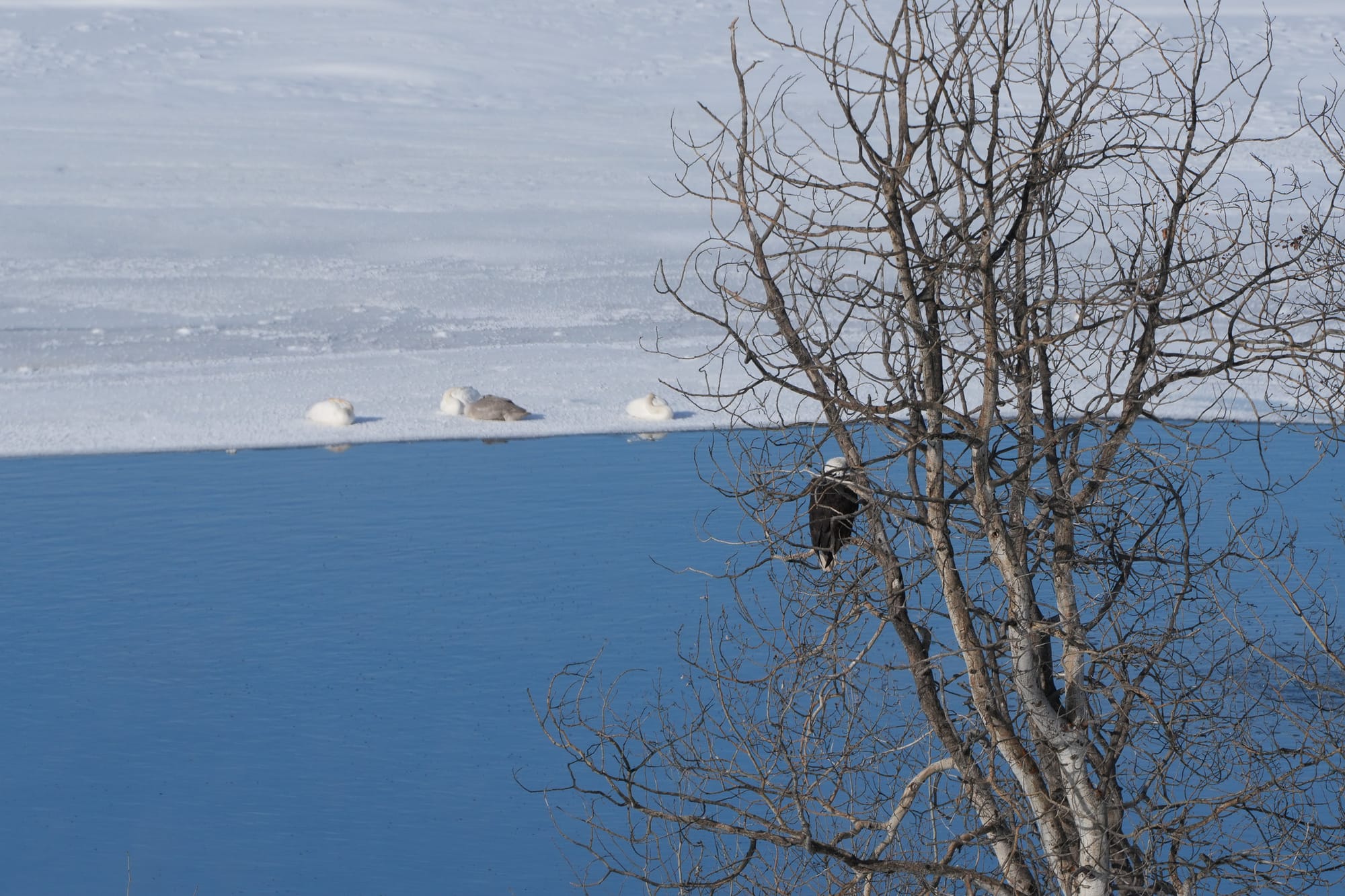
Sadly, we witnessed that as a young trumpeter swan began struggling on the ice, then passed away during the coldest night of the week.
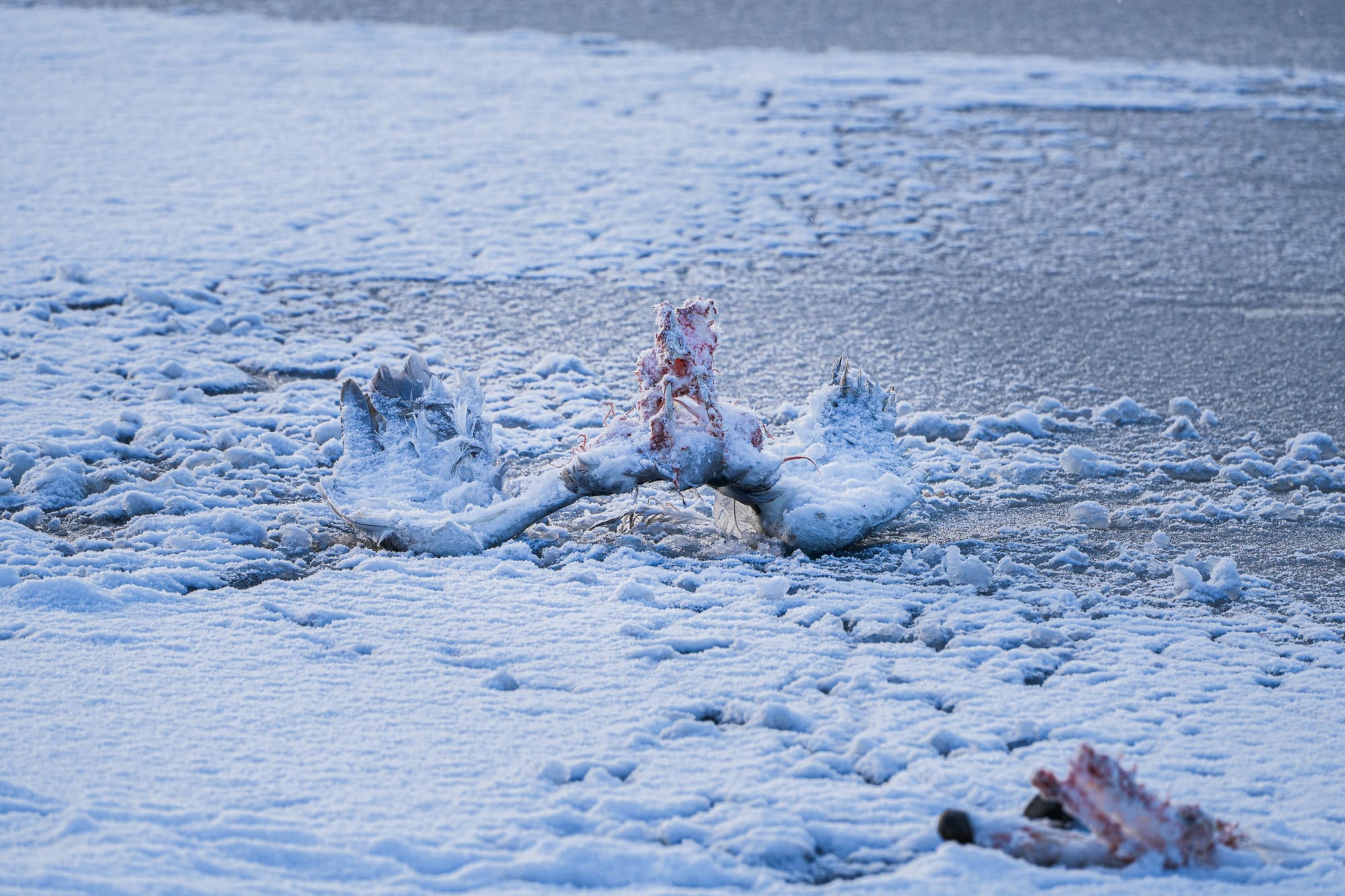
Fortunately, for skiers, wildlife, and the water table, we finally started getting some measurable snow this week. Snowpacks are essential for storing much-needed water that will slowly percolate into the soil as temperatures rise in the spring. And snowpacks also insulate the ground and provide safe places for small animals like mice and voles (we explored this idea in a recent newsletter here).
Otherwise, it's been a quiet week. One day I spent an hour and a half skiing at the Chickadee trailhead and didn't see or hear a single animal. As expected, most activity is still happening at the bird feeder with the usual assortment of chickadees (black-capped and mountain), nuthatches (pygmy and white-breasted), woodpeckers (hairy and downy), finches (house finch and goldfinch), and doves (mourning and Eurasian collared).
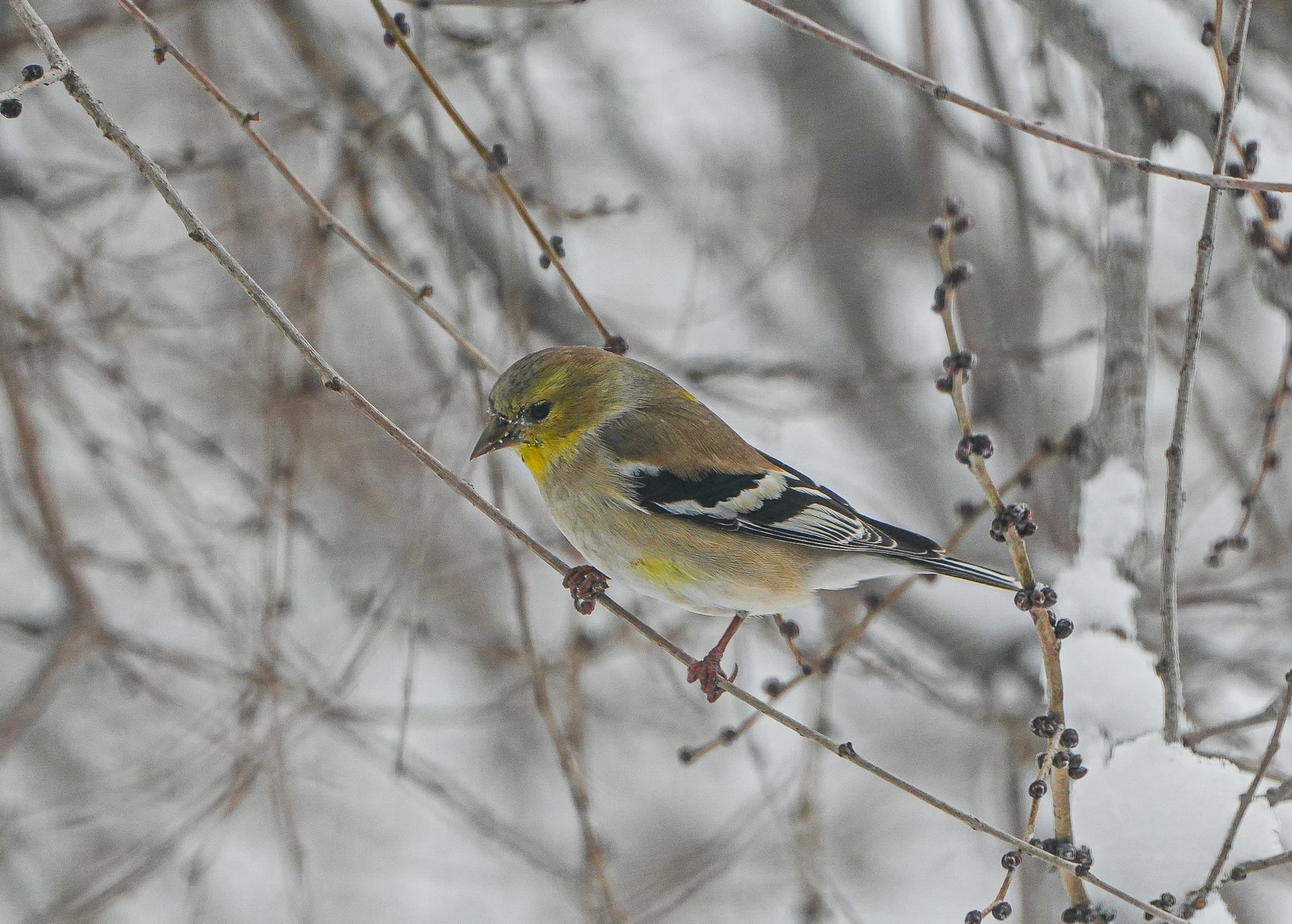
The only changes I've noticed have been an uptick in dark-eyed junco numbers, and the arrival of collared doves that I haven't seen in months. I was also pleased to see that pine grosbeaks are still hanging around in small numbers.
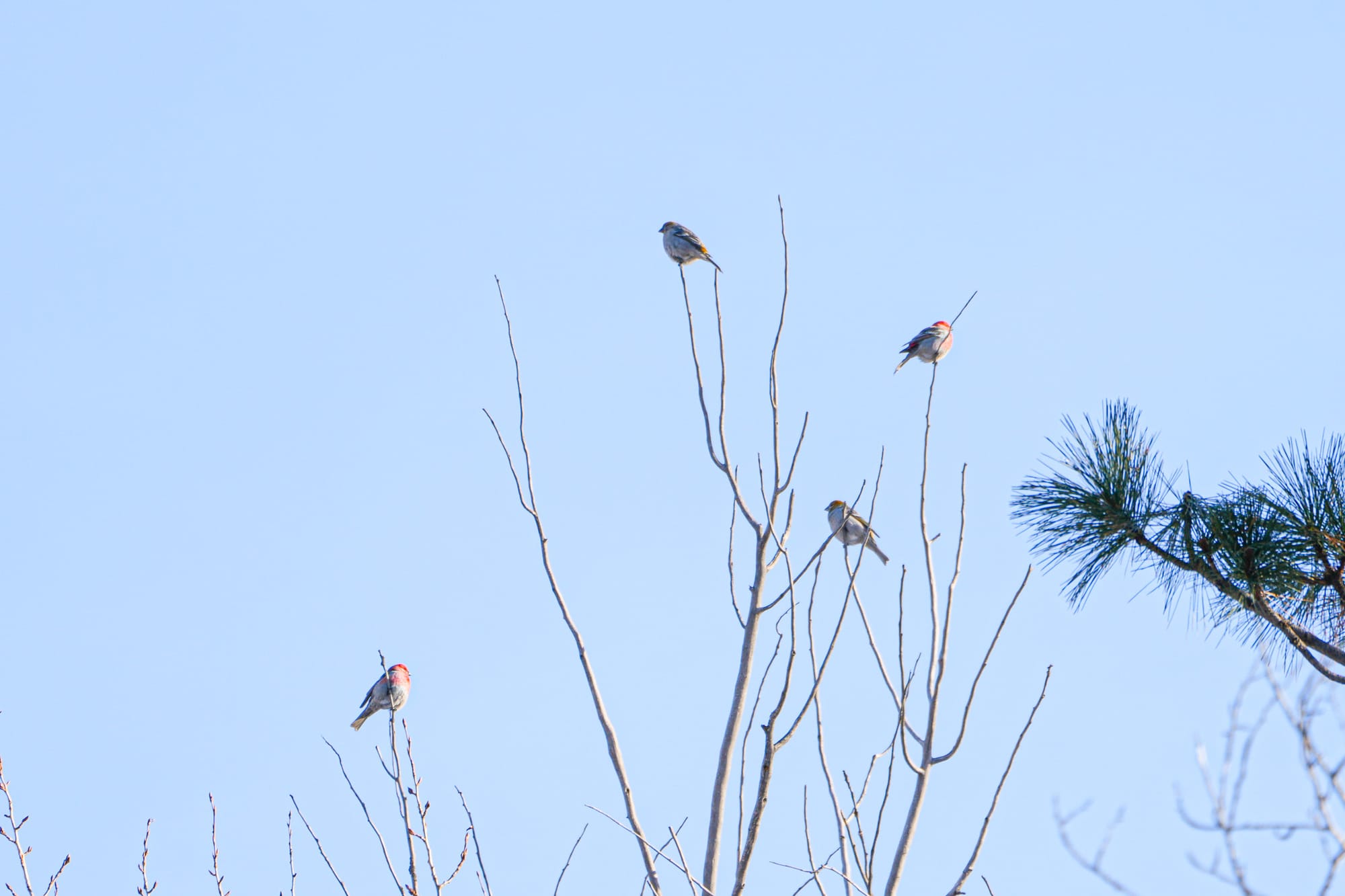
Observation of the Week: Deer Issues
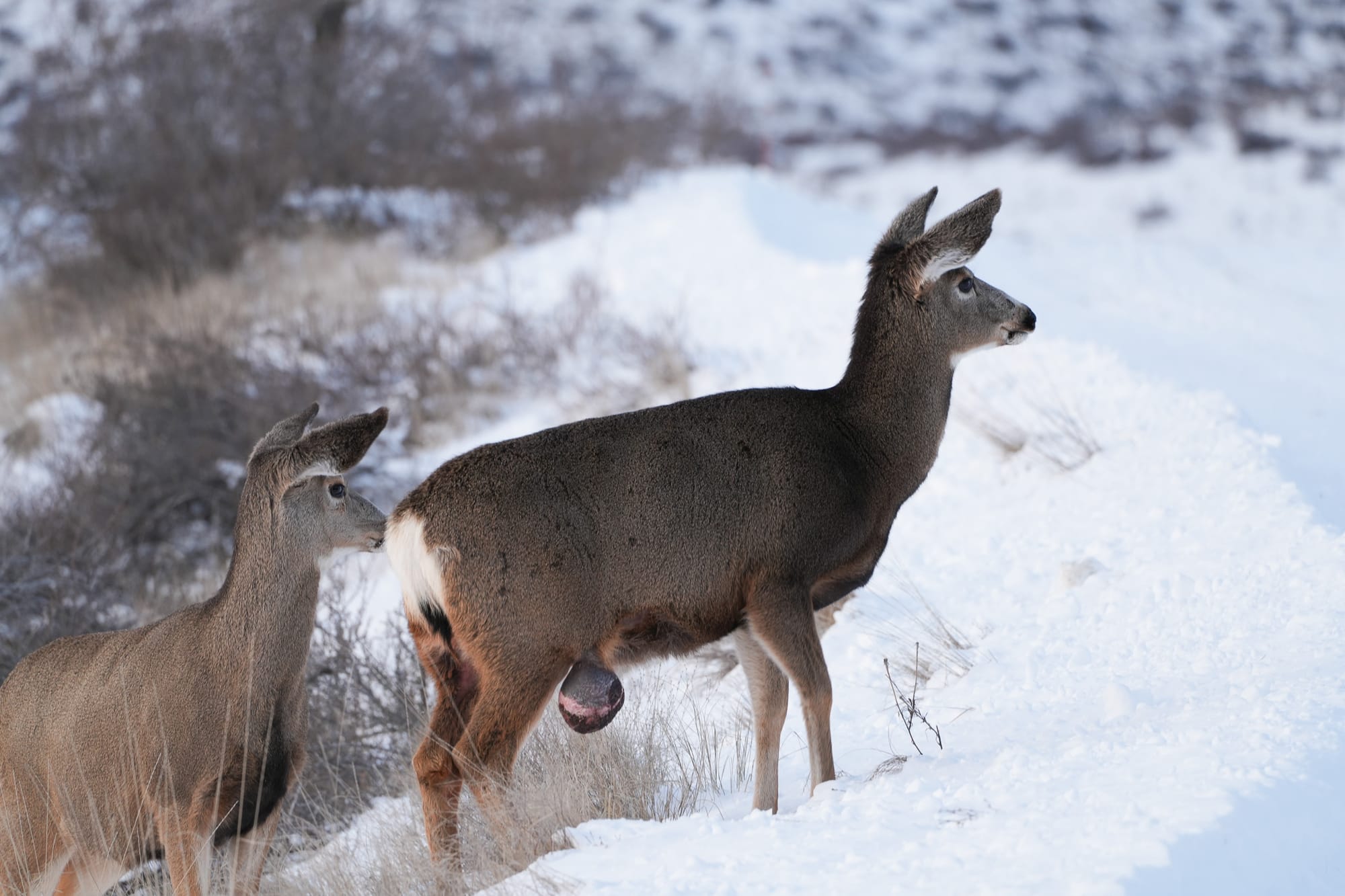
I posted this photo of a deer with a large growth on the Nature Notes Facebook group this week, and it sparked a lively discussion about the different types of growths that people have observed on deer.
I'm not sure that we arrived at a consensus on what was happening in this photo, but many people mentioned fibromas (also known as deer warts) because they are often seen on deer in the Methow Valley.
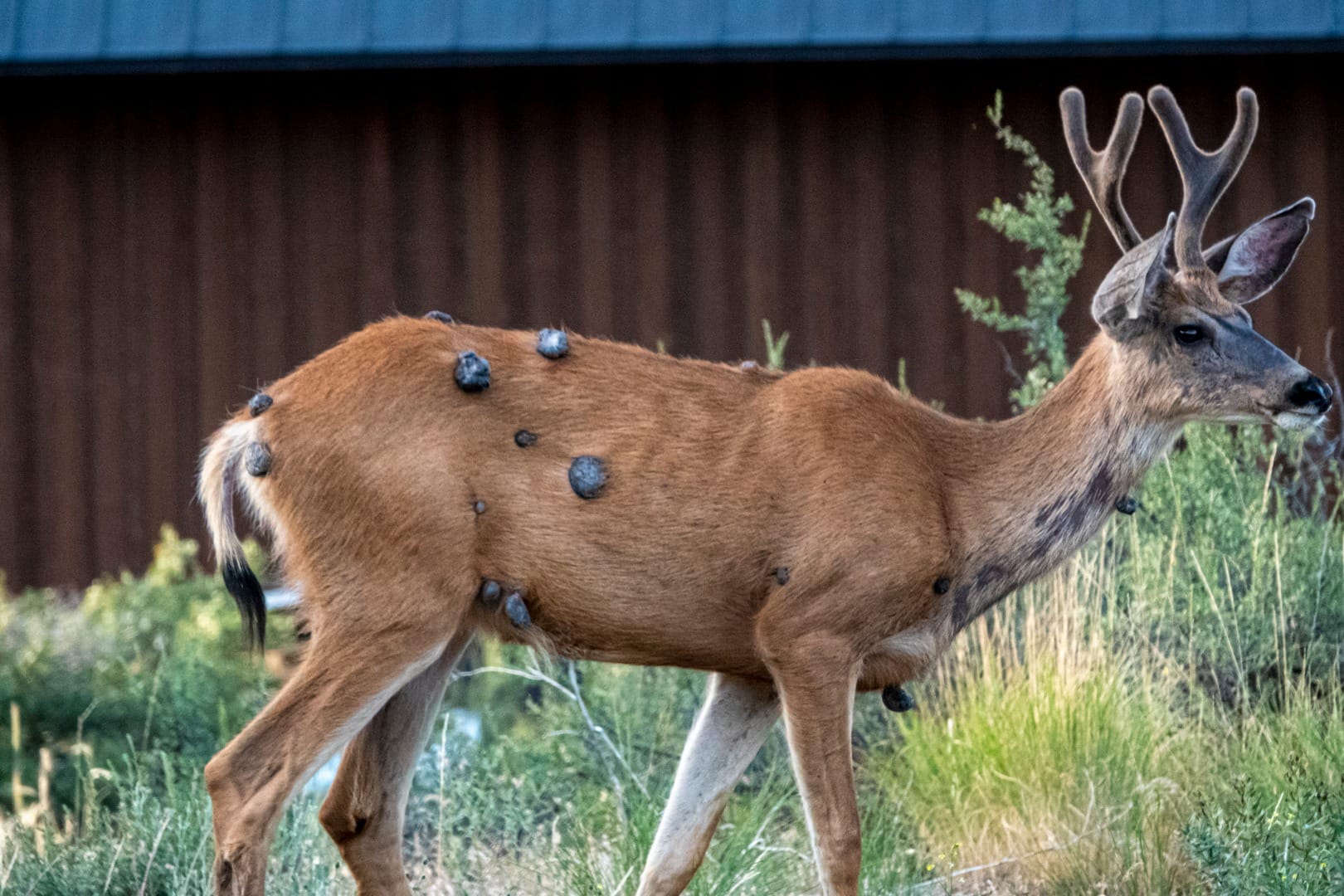
Fibromas are small to large, wart-like growths caused by a naturally occurring virus. It's not clear how this virus is spread, either by biting insects or on surfaces in the environment, but there can be as many as 200 fibromas on a single deer.
Despite how horrible these growths look; they only rarely cause issues for the impacted animal and reportedly begin to regress after a couple months.
I was worried about this deer at first, but apparently other people have been seeing her for months, and she remains healthy and active, so that's a hopeful sign.
